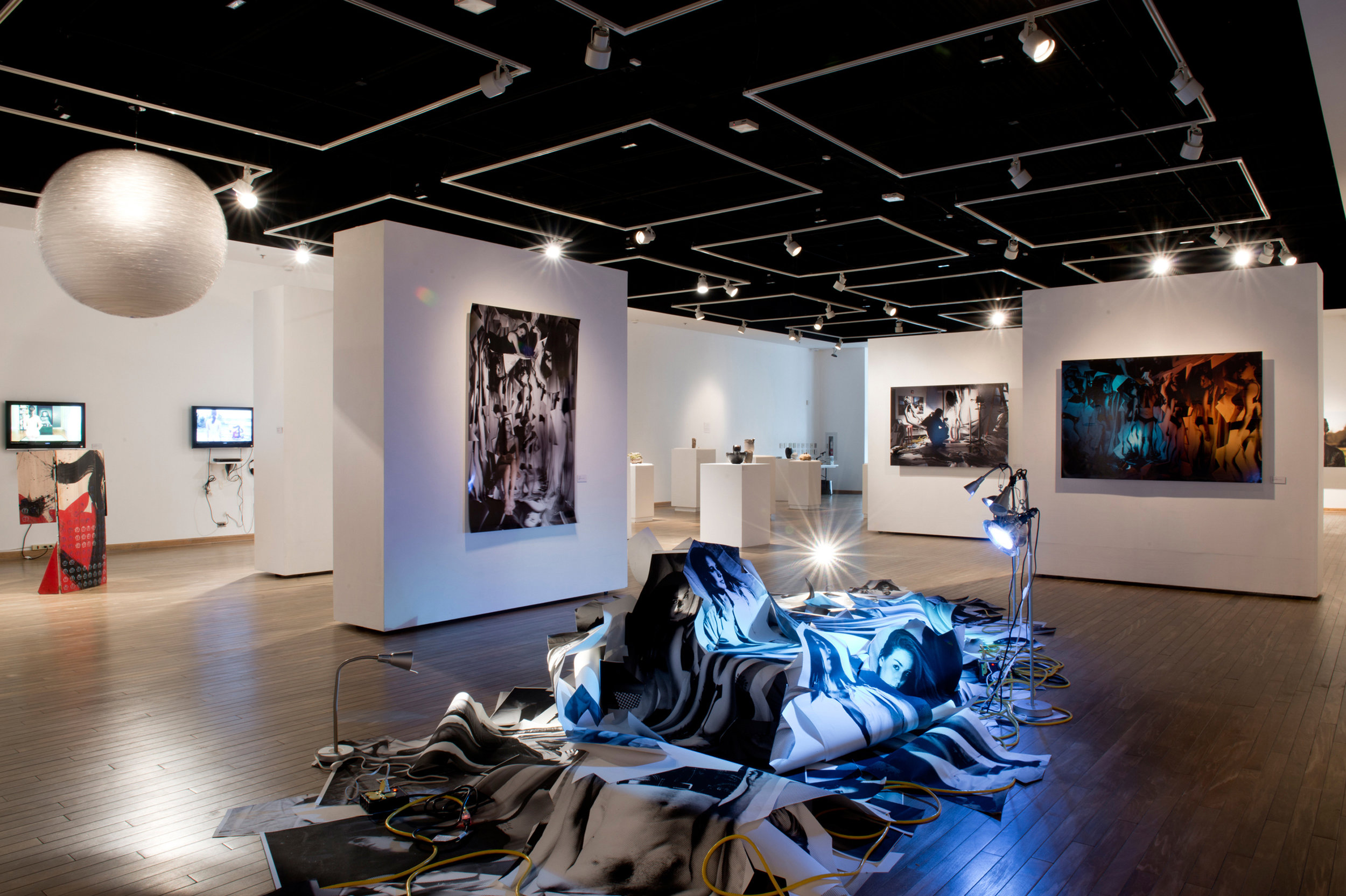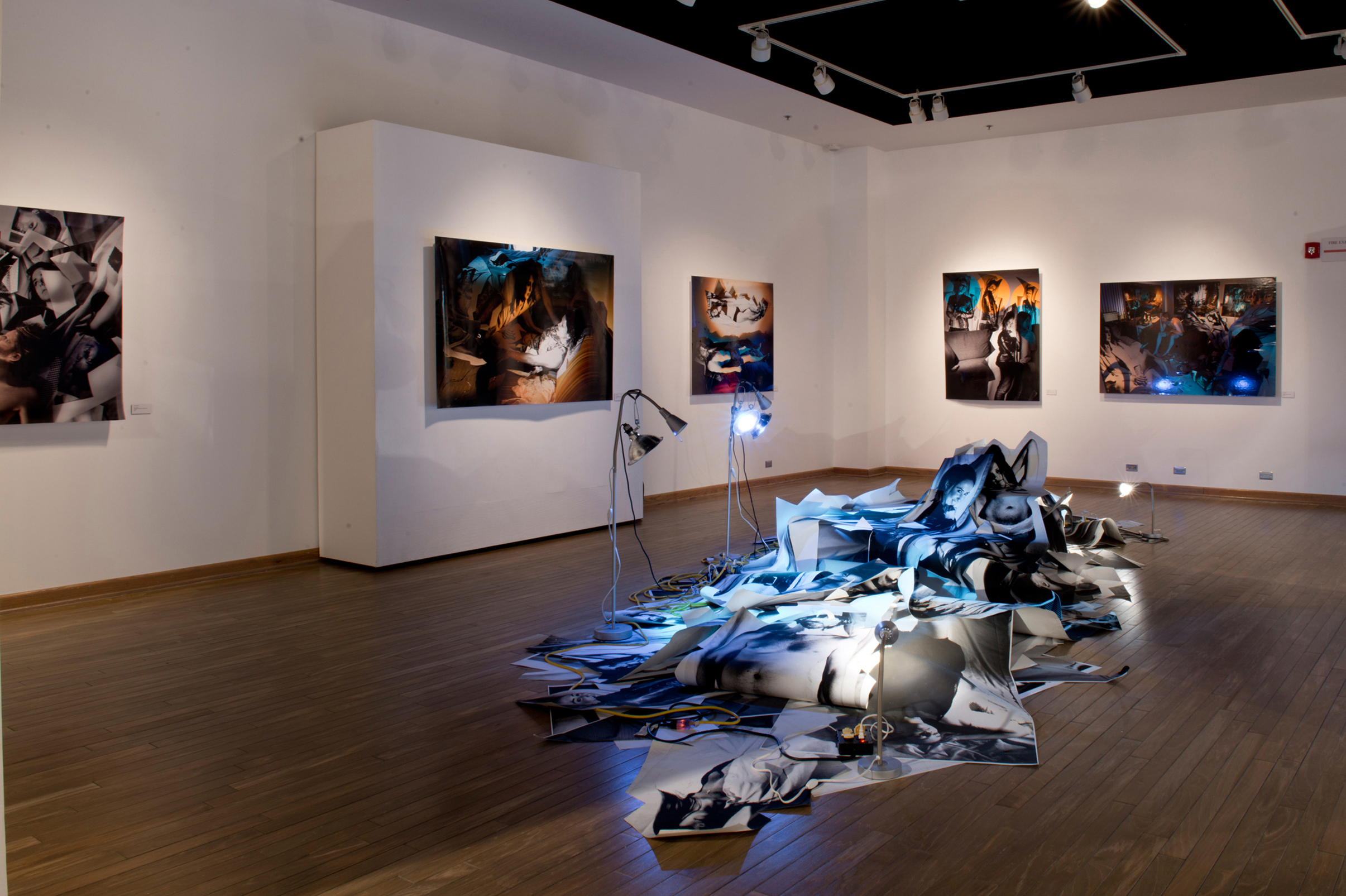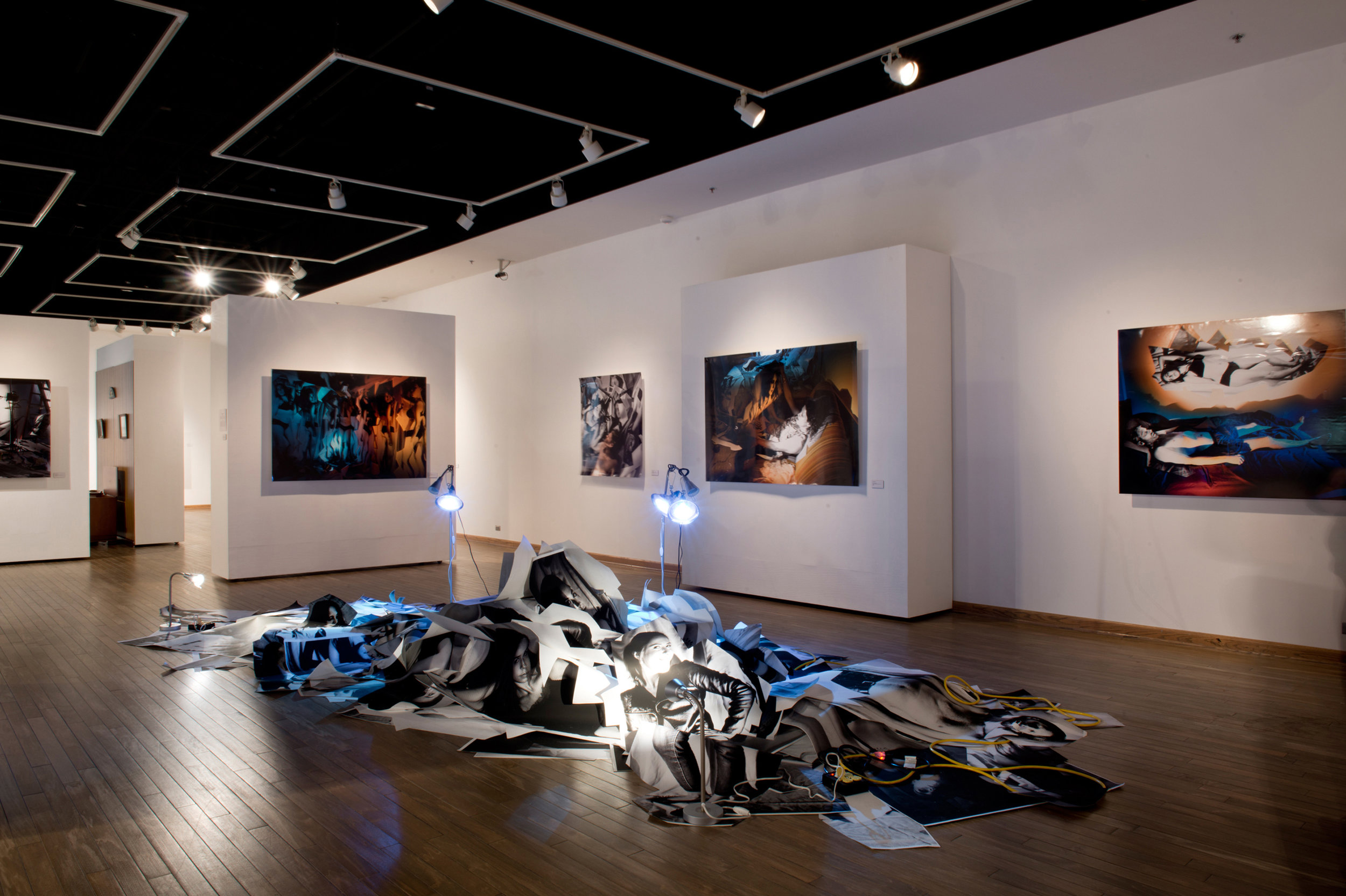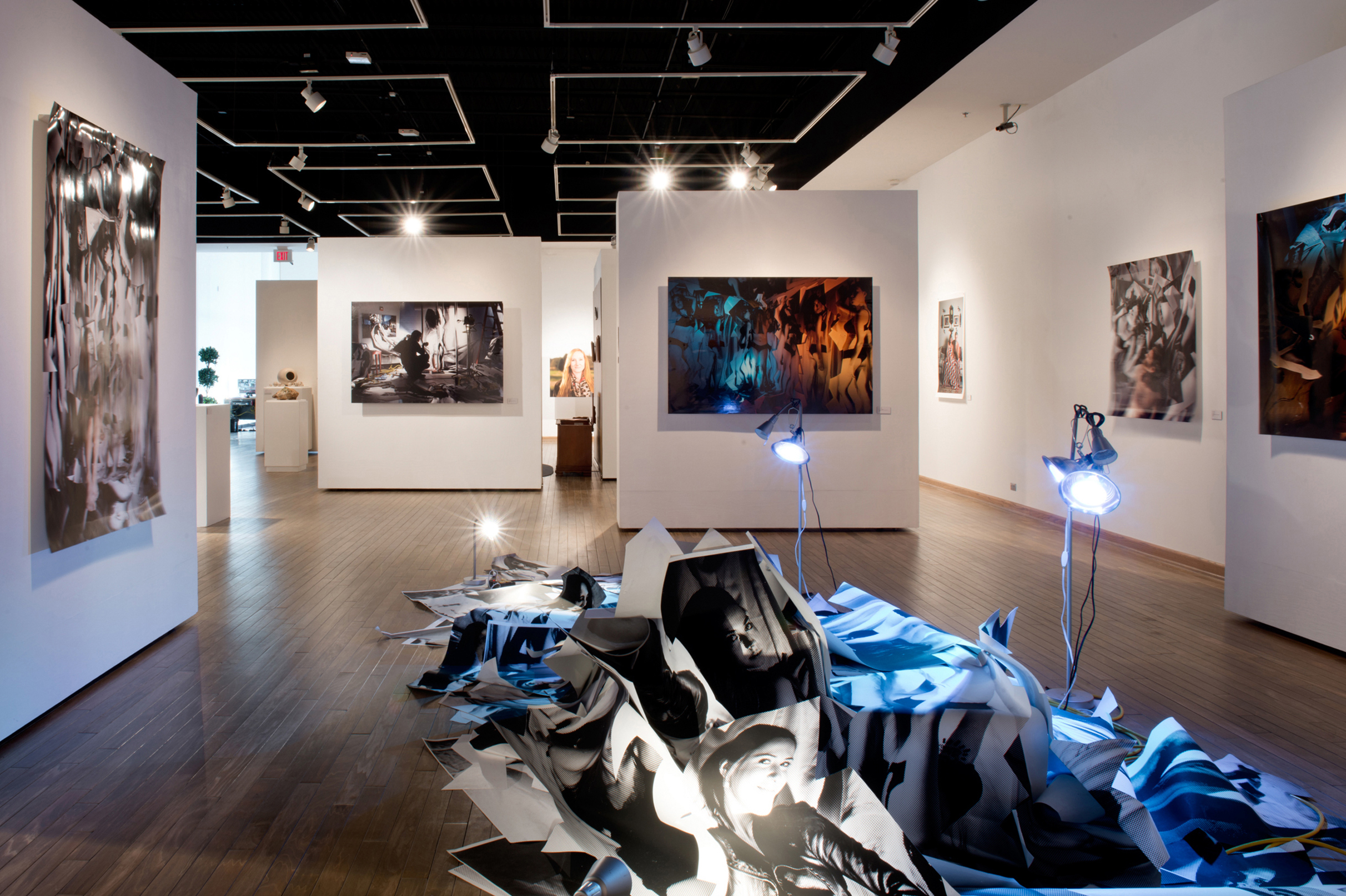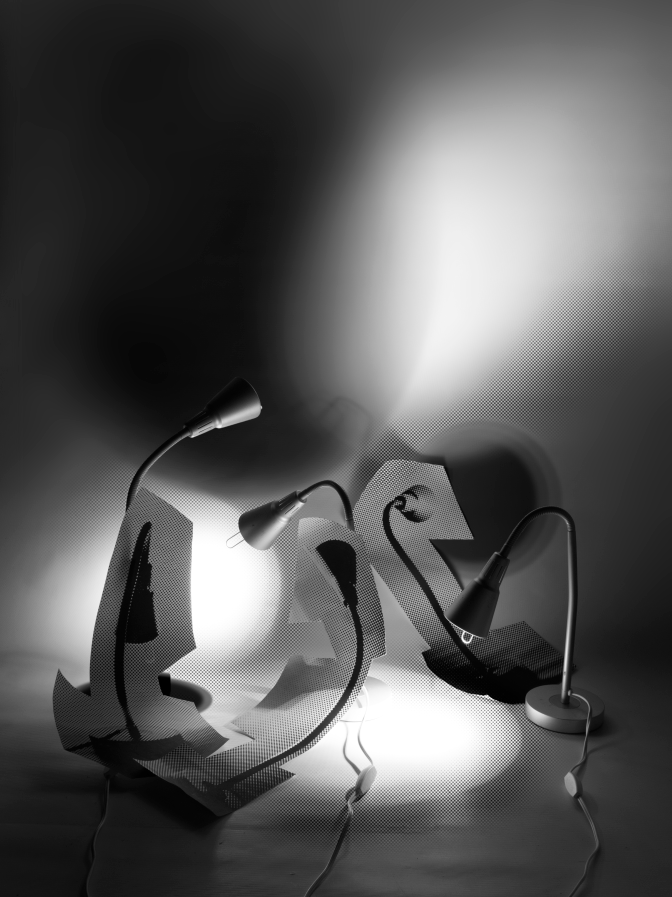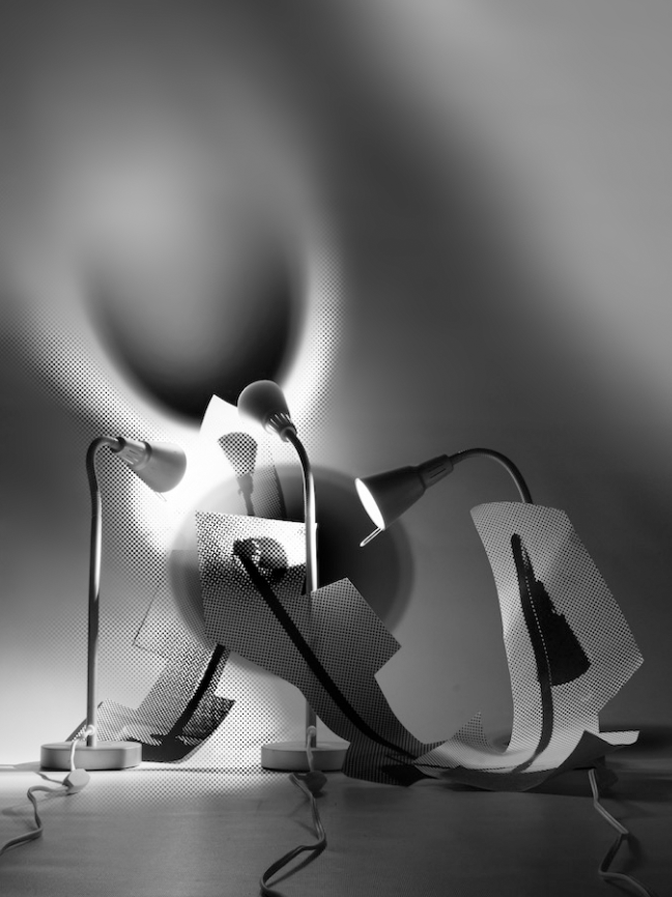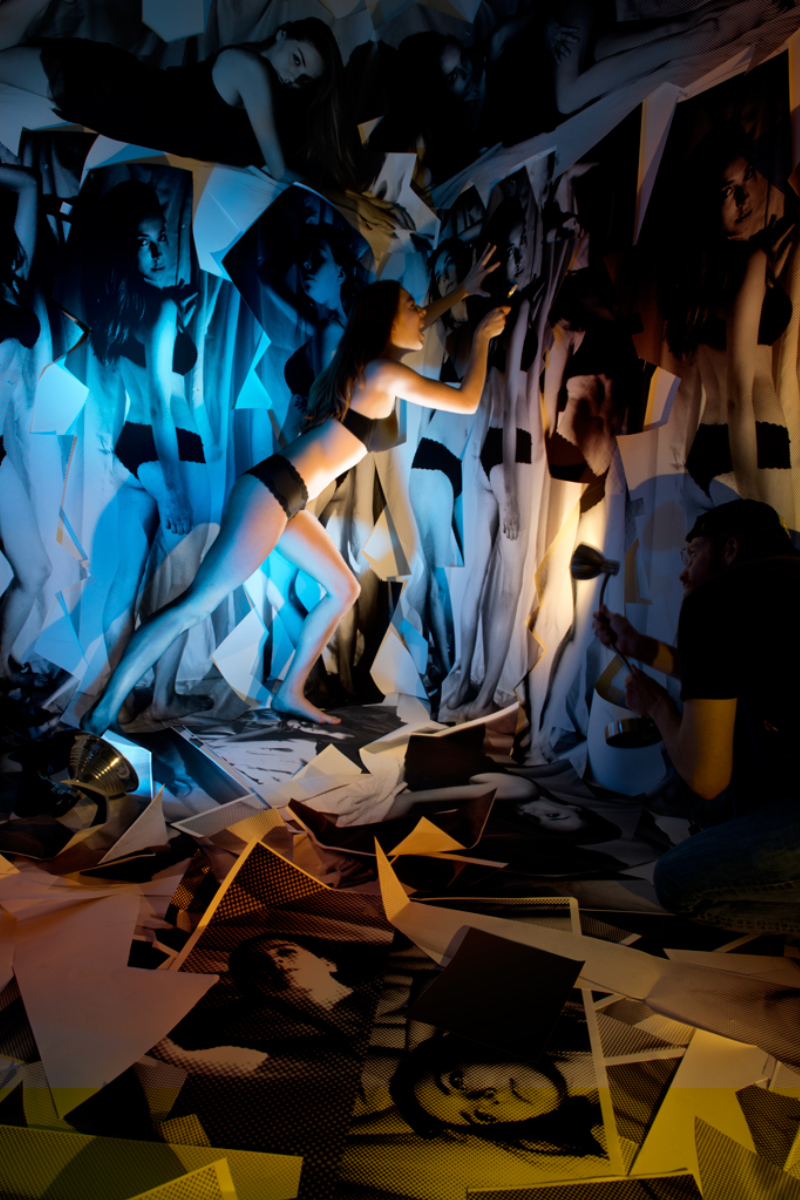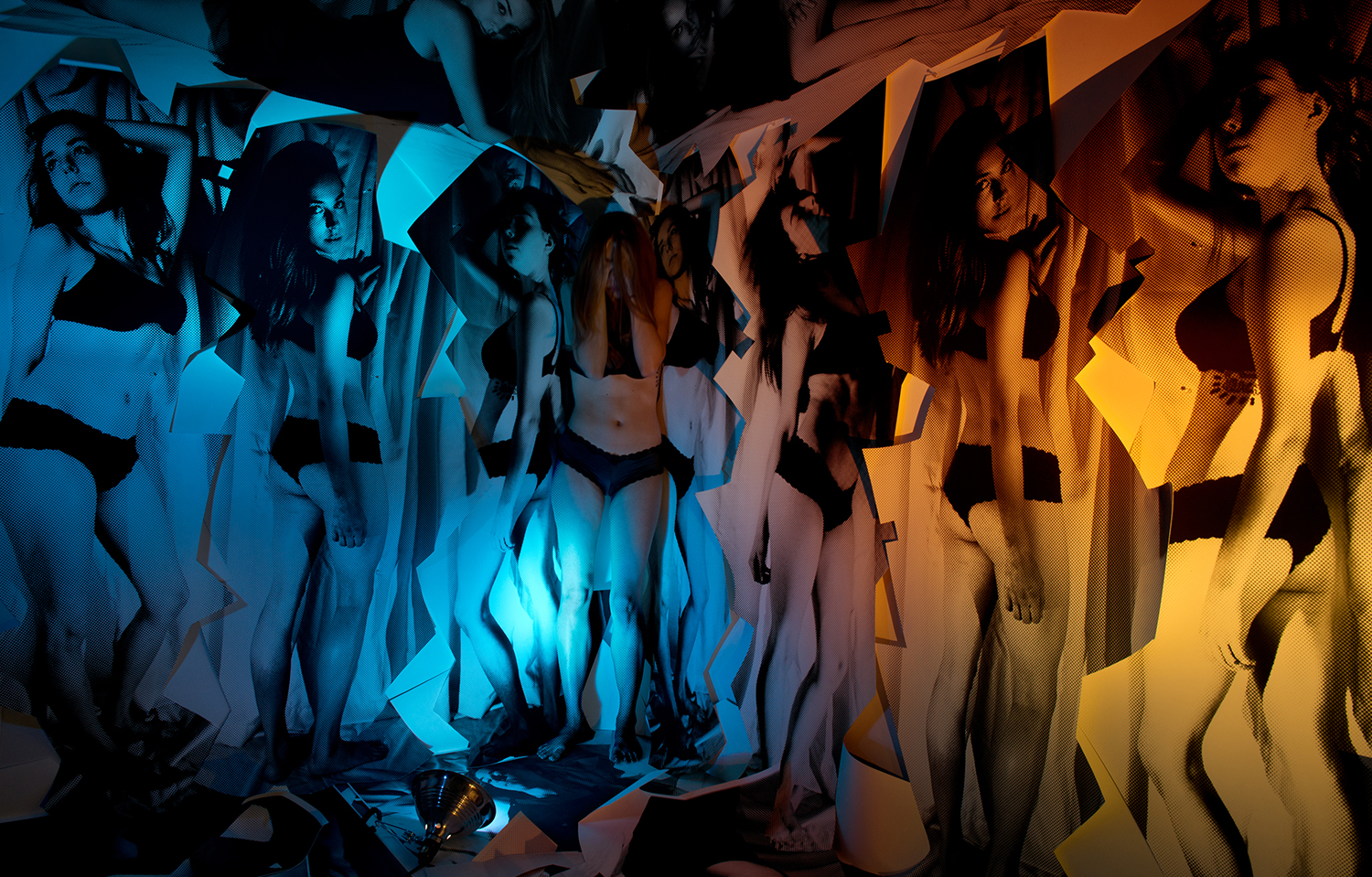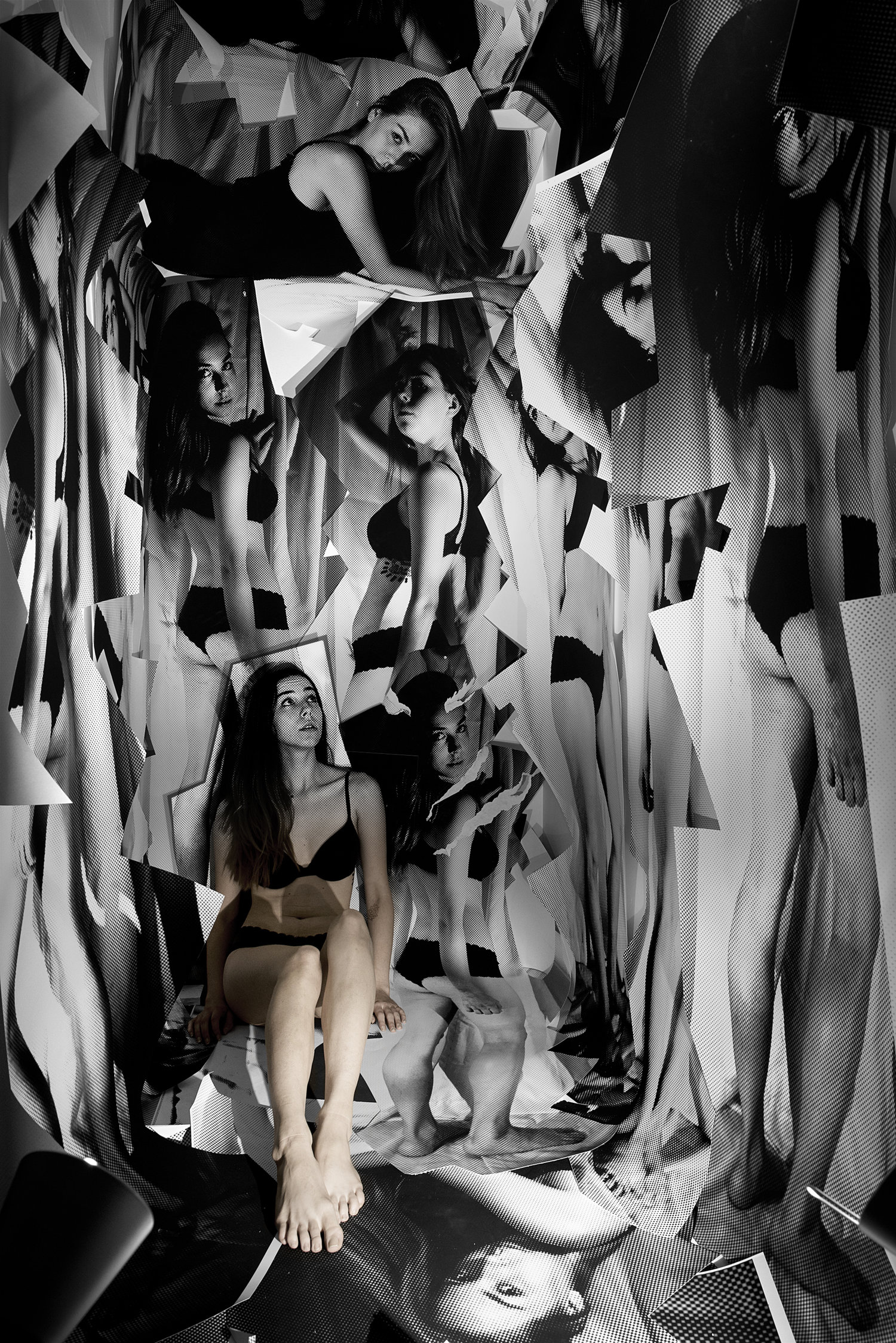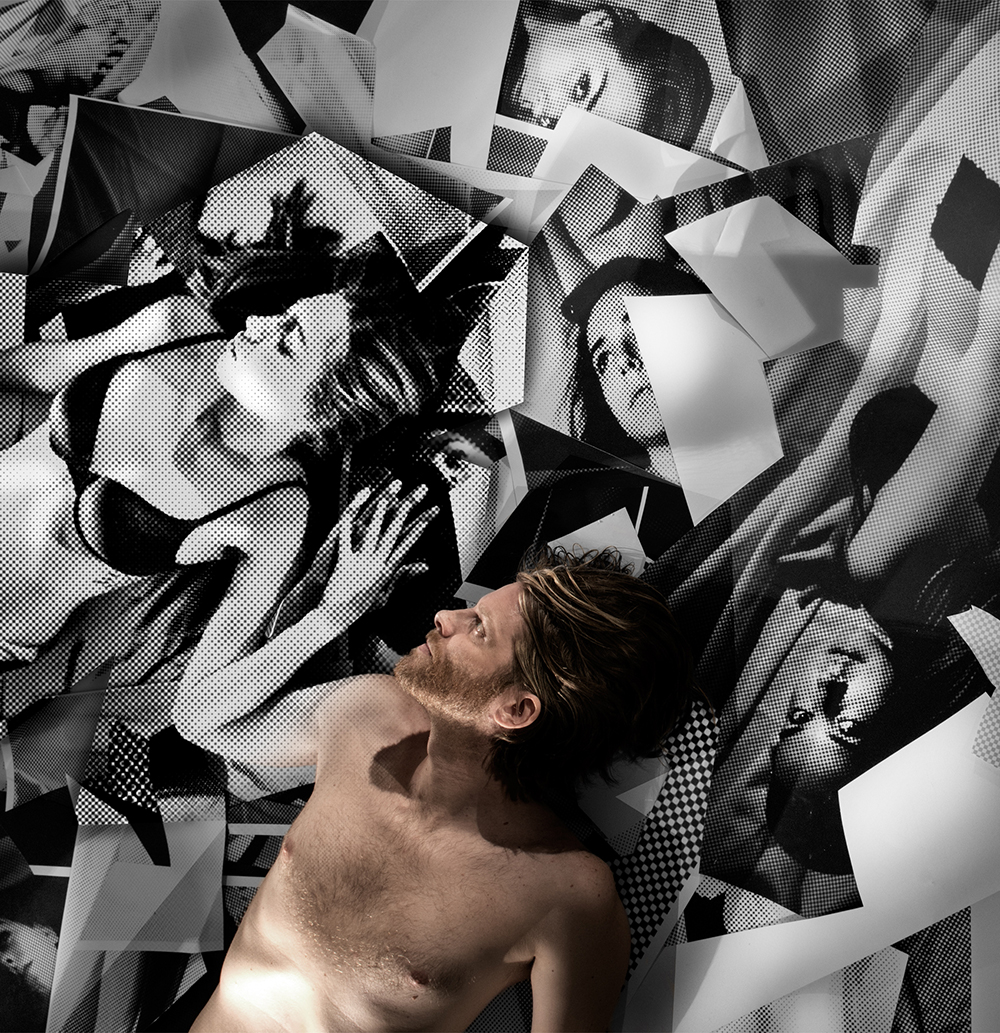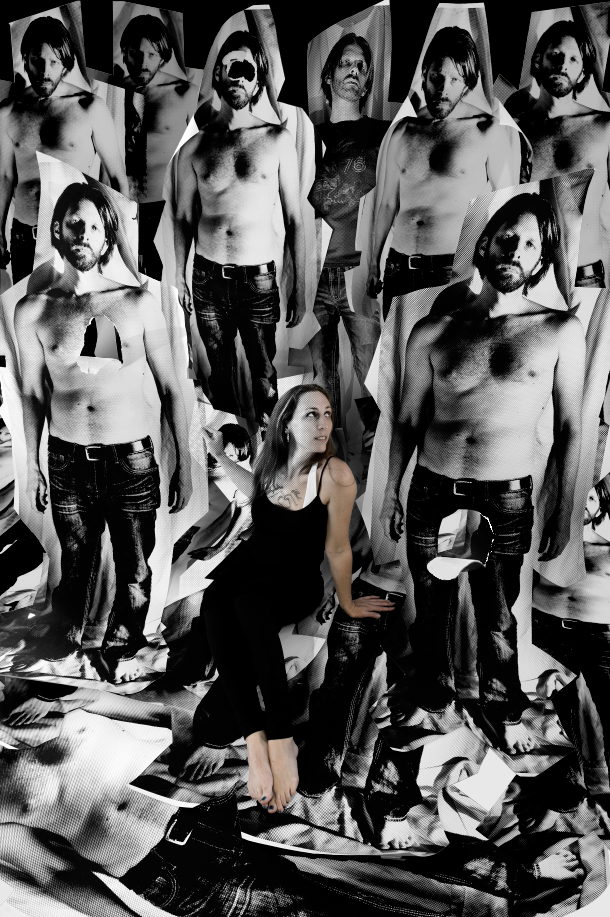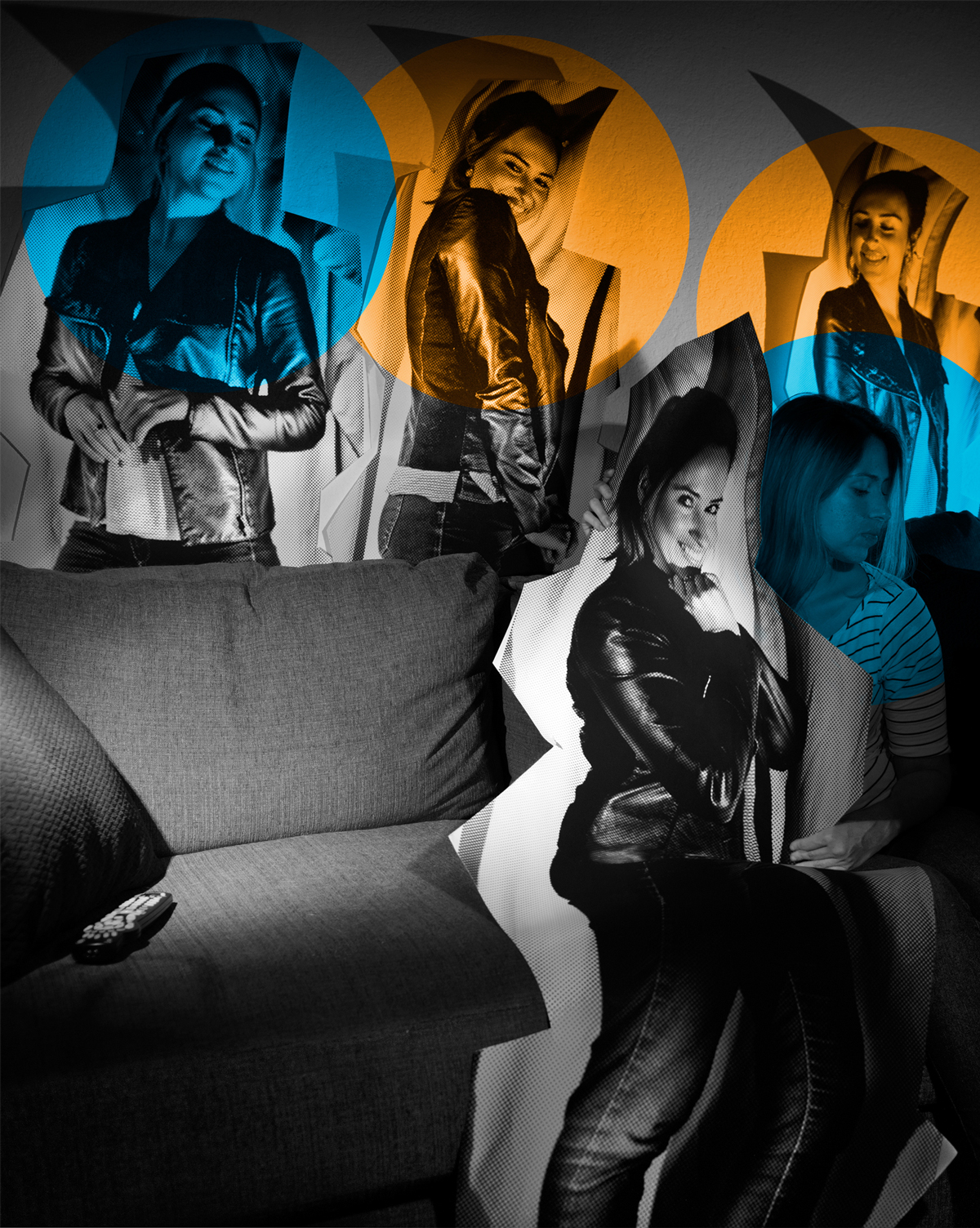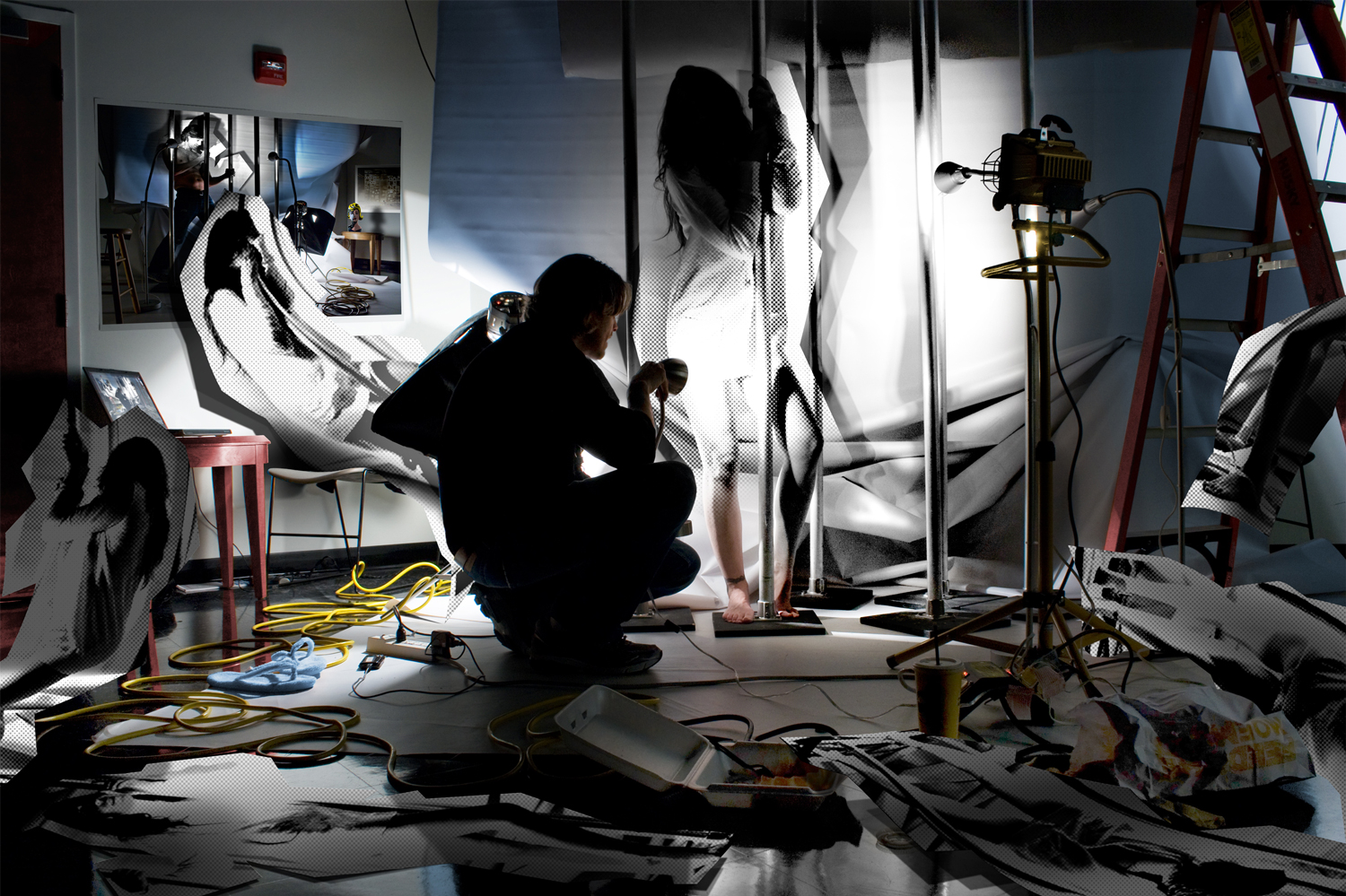FINE ART
Paper Light Series
About this series
Composition:
Constructing the shots as a diptych with the objects on the bottom of the image and the lights and shadows working the top half of the image. Most artists that work with light and shadow build shapes that are representative of recognizable objects; I’m not interested in those kinds of forms. David Haxton and James Turrrell’s work comes to mind when viewing the lights and shadows interacting with each other in this work. There is a sensual quality of the lights caressing and invading the surfaces it is touching.
Light, shadow, dots:
The lights shining on the paper representations create ben-day dots that mix with the ben-day dots that already make up the paper representations to create a new pattern. This new pattern feels rushed, as well as looking broken, messy, crisp, and corrupt.
The shadows projected by the paper representations are canceling out the lights, and hindering some of the ben-day dots it comes in contact with.
The bed-day dots and black & white imagery with dramatic lighting represent fantasy in a theatrical environment.
Time:
Time is represented in the form of the ben-day dots on the surfaces from the lights. The ben-day dots are not fading in the images, but only beginning to form from the light.
Paper Issues
The Title Of My Thesis Paper: “Real People Acting Out Interpersonal Issues With Paper Representations”
Self-Approval
Inspired by Vanessa Beecroft. Conveying a claustrophobic and self-critical analysis by surrounding the model with multiple paper representations of herself. Showing the chaos and carnivalesque figures women project on their own self image and of the pressure our society places on women to look a certain way. Her own image is distorted from the camera showing large feet compared to her tiny head while the top half of her morphs into a paper mask of the same representations.
Her Agenda
Her agenda is about a man who wants his partner to connect with him. I utilized my interest in visual tracking to reinforce the implied narrative. I wanted viewers to look at the human who is in color in the piece, and follow his gaze to the left toward the woman. Reading the image from right to left relates to going to the past for Western culture. She is also positioned dominantly higher than him and looking away. Our eyes are directed to the paper woman on his immediate left, then upward to the right, in a clockwise direction. Next, we visually traverse the other women’s faces down along the right side of the picture until our eyes have returned to the man again.
A-void
The model holding a paper representation of her “other” self, suggests that she is happy, but the “real” model looks indifferent. She explained that she has to put on a smile when out in public or meeting someone on a date.
The spot light onto the empty spot on the couch implies the presence of a potential suitor making the paper representation she is holding into a shield and mask.
While digitally manipulating this image I though of John Baldessari. He is famous for placing colored dots over people’s faces, forcing us to ask what the image is communicating. Unlike Baldessari I wanted to show the expressions on the faces and relate the matching colored circles to connect the narrative.
Missing What’s Missing
This is the image that Ashley wanted to portray with my paper man as the representation of the men whom she has been with. It looks violent because there are ripped holes in the crotch area, the heart, the eyes, and the mouth, but Ashley wanted to convey that these were the actual pieces the woman miss from the men she has been with.
The bottom half of the image shows her struggle to find the missing pieces. The top half shows a paper representation of a man sitting in a chair looking at the scene as if to say “Here I am, just ask me.”
I added flesh tones to the paper man where Ashley is ripping a hole out of the heart area, making the paper man seem more human. Importantly, this is the first work where the paper image begins to morph into a human being. This is significant because, until this moment, my images were about human beings turning into paper. I wanted to emphasize the paper man in the chair more than the spectacle of Ashley ripping the heart of a paper man.
In terms of his location in the picture, the paper man in the chair looks further away from us than Ashley. Moreover, he is smaller than Ashley, making him seem still further away. Applying a warm bright color in that area paradoxically pulls him still closer. And yet, the foreground image of Ashley also has been blurred. These contradictory indicators of spatial perspective inspired me to consider the art of Hans Hofmann and his “push and pull” technique, in which colored shapes move in and out of the space of an artwork. The color in my “backgrounds” caused negative spaces to project forward and to make my artwork look flat.
The eye tracking on Missing What’s Missing is difficult to interpret. When I look at the picture, I am drawn to the middle where Ashley’s image is, but then I very quickly avert my gaze to the paper man in the chair. I think that this is because Ashley is blurred and hard to see, and my brain does not want to struggle with the blurry parts. I enjoy this piece because the colors, light, and shadows are sensual. Even though the blurry areas are off-putting, I cannot stop staring at the piece. I asked Ashley for her thoughts on the completed artwork, to which she replied, “I totally get the feeling of being so done, but still have so many pieces it’s hard to let go of.”
Her Own Judgement
Serendipity was the image that sparked my thesis, but this image of the model sitting with the paper representation was the spark for what my thesis would be about.
Inspired by Gregory Crewdson, I rented a hotel room, and took photos of the living model interacting with paper representations for self-critical analysis.
The model holds a paper representation on top of her in a dominating pose. The gaze of one woman admiring another woman even though the latter is made of paper. From my conversations with the model she believed that she was overweight. This was the moment that self-critical analysis by the depicted women came into my work.
I position the lights to make a dramatic scene. The most prominent element is a bright light on the model, which overpowers the rest of the image. It is important to me that the viewer’s eye moves through the composition, and I use the point of view of the model as a guide for the viewer. Placing objects in the picture’s background as visual clues.
The Ben-Day dot paper representations depict the human figure’s transition from a portrait, defined by chiaroscuro, into an image that is flat and lifeless. The paper representations are artfully placed in the background of the image to direct the viewers eye through the art.
Thesis show @ the UCF Gallery, Orlando, Florida, March-April 2015.
The photographs on walls and simulation of the my process of paper people that I have used in the imagery interacting with the real people are on the floor.
